May 18, 2025 | 04:08 GMT +7
May 18, 2025 | 04:08 GMT +7
Hotline: 0913.378.918
May 18, 2025 | 04:08 GMT +7
Hotline: 0913.378.918
“Long An supports the policy of increasing the production area of autumn-winter rice”
After harvesting early summer - autumn rice and selling it at a high price, farmers have begun to sow the autumn-winter rice crop. To date, the province has sown more than 40,000/57,000 ha of autumn-winter rice, concentrated in the districts of Tan Hung, Tan Thanh, Thanh Hoa and Kien Tuong town.
Long An strives to produce 285,800 tons of autumn-winter rice, of which the district of Dong Thap Muoi would reach over 230,000 tons and the southern districts reach 55,500 tons.
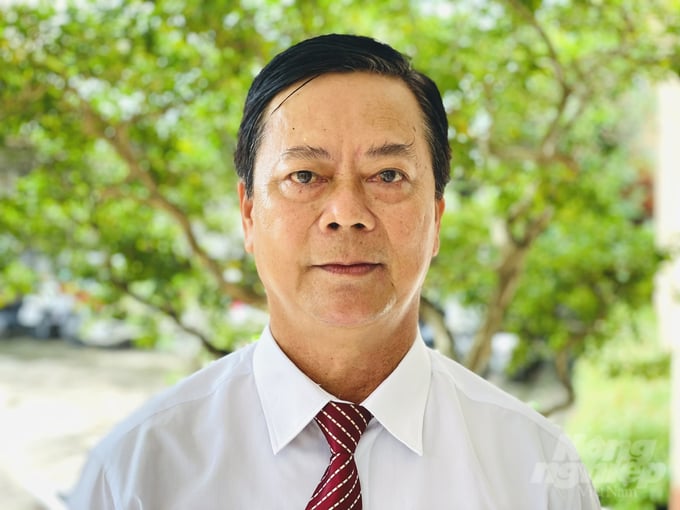
Nguyen Chi Thien - Deputy Director of Long An Department of Agriculture and Rural Development. Photo: Le Hoang Vu.
Long An agricultural sector recommends localities sow the autumn - winter rice early in order to sow the winter - spring rice crop 2023 - 2024 earlier than planned. The goal is to complete the harvest before Tet, avoiding drought and saltwater intrusion which commonly occur after Tet.
If this strategy strikes success, expanding the production area of the 2024 autumn - winter rice crop to 60,000 - 62,000 ha is within reach. Long An strongly supports the policy of the Ministry of Agriculture and Rural Development and will make efforts to contribute to increasing the area of autumn - winter rice in the context of good rice prices and favorable export conditions.
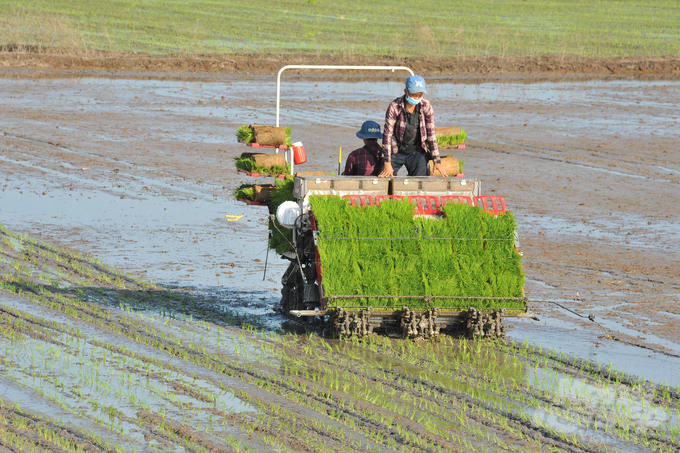
Mekong Delta farmers sow seedlings for the autumn-winter rice crop 2023. Photo: Le Hoang Vu.
“Ensuring production area, improving quality”
Regarding the autumn - winter rice crop, Dong Thap has finished sowing 116,000 ha, reaching 100% of the plan. This year, Dong Thap chooses not to increase the production area but switch to improving rice quality.
Three localities, namely Thap Muoi, Cao Lanh and Cao Lanh city, will harvest autumn-winter rice early in September and sow the winter - spring crop of approximately 60,000 ha in early October, expected to harvest before Tet or a few weeks past Tet to ensure that there is no drought or saltwater intrusion.
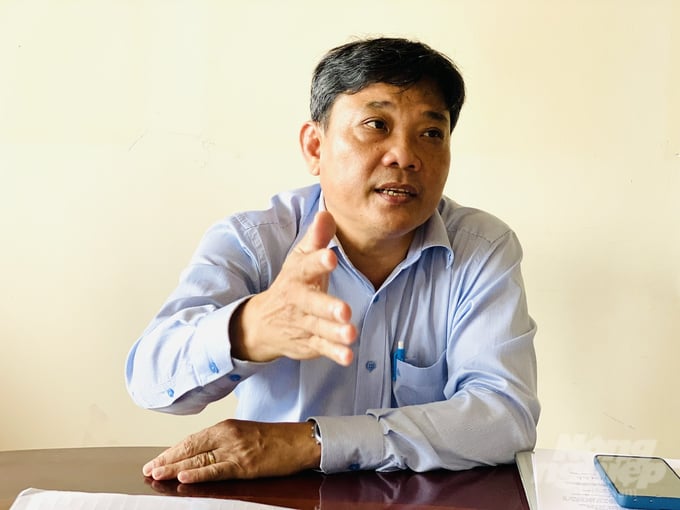
Le Quoc Dien - Deputy Director of Dong Thap Department of Agriculture and Rural Development. Photo: Le Hoang Vu.
In the upper regions such as Tan Hong, Hong Ngu, Tam Nong, Thanh Binh and Hong Ngu city bordering Cambodia, it is easy to be affected by the flood season which normally occurs from August to November (lunar calendar). Therefore, the local agricultural sector recommends farmers cultivate autumn - winter rice in closed dikes and only cultivate it if all safety conditions are met.
“The seedling stage of the autumn - winter rice crop exceeded the plan”
As of now, Can Tho farmers have completely harvested 73,000 ha of the 2023 summer-autumn rice crop and sowed nearly 65,000 hectares of the 2023 autumn-winter rice crop, reaching 108% of the plan.
In general, the autumn - winter rice fields are growing and developing well, in which the rice in the seedling to tillering stage accounts for 46%, and the rice in the flowering stage accounts for 54% of the total area.
This period is the peak of the rainy and stormy season, so rice fields entering the flowering stage are very susceptible to the impact of rain and wind, which is favorable for the development of rice blast disease and some other harmful pests or diseases to rice.

Tran Thai Nghiem - Deputy Director of Can Tho Department of Agriculture and Rural Development. Photo: Le Hoang Vu.
Can Tho agricultural sector requires local authorities to recommend farmers visit the fields regularly; apply N, P, K fertilizers in a balanced manner to save costs and limit the growth of pests and diseases; observe carefully the disease on the foliage below for timely prevention and treatment; not combine foliar fertilizers with growth stimulants when spraying pesticides to treat leaf blast disease; prevent leaf blast disease from spreading on a large scale.
“Be flexible in the autumn - winter rice crop”
In this autumn - winter rice crop, Hau Giang sows 24,500 ha, with a total estimated harvest of over 132,000 tons. The sowing schedule is recommended to focus on two main phases, the first from July 4 to 10 and the second from August 2 to 8.
Depending on the situation of brown planthoppers retreating into lamps and the actual situation of weather and hydrology of each region, the Offices of Agriculture and Rural Development of districts, the Office of Economic of towns and cities need to develop a suitable production plan for the autumn - winter rice crop, ensuring the highest production efficiency.
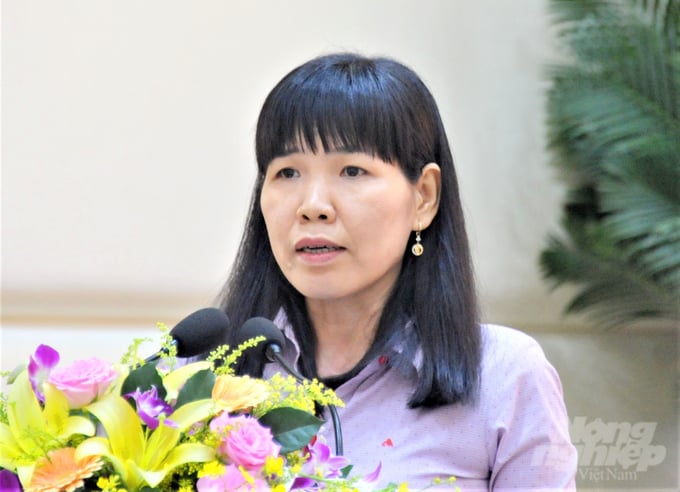
Nguyen Thi Giang - Deputy Director of Hau Giang Department of Agriculture and Rural Development. Photo: Dao Chanh.
In the case of Chau Thanh A and Vi Thuy, districts with a part of summer - autumn rice production area harvested early, it is possible to actively sow the autumn - winter rice before the crop time frame to avoid floods and storms. But farmers need to ensure the principle of avoiding planthoppers and having enough separation time between each crop, at least more than 3 weeks in order to isolate harmful organisms and create conditions for the straw to decompose, limiting organic poisoning for rice.
Because 2023 has a very complicated rainy season, it is recommended that farmers regularly monitor the weather forecast to minimize damage from storms and choose the best time to sow.
“Expecting more than 400,000 tons of autumn - winter rice”
In the 2023 autumn - winter rice crop, the province plans to sow 71,200 ha. The harvested output is estimated at nearly 383,000 tons. In terms of seed structure, fragrant rice and high-quality rice account for over 90% of the cultivated area. Many localities have actually sown more than planned, with the total area increased by more than 4,000 ha. Therefore, the output of the whole province can potentially exceed the 400,000 tons mark.
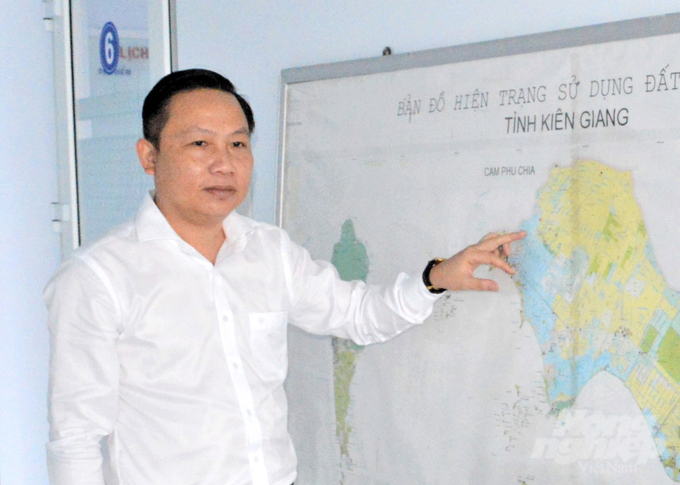
Le Huu Toan - Deputy Director of Kien Giang Department of Agriculture and Rural Development. Photo: Dao Chanh.
For effective production, it is advised to have time to separate the summer - autumn crop and the autumn - winter crop in order to prepare the soil and clean the field; destroy straw or use active ingredients to decompose straw to limit organic poisoning; support and guide farmers to promote synchronous implementation of the mechanization process, creating linkages in production; create favorable conditions for farmers to access new technologies, reducing seed quantity, and increasing the efficiency of fertilizers and pesticides.
Another recommendation is that when using fertilizers in the autumn - winter crop, apart from providing macronutrients, farmers should pay attention to adding calcium and silicon-based fertilizers to rice to enhance tolerance in stormy conditions.
Translated by Samuel Pham

(VAN) 14 out of 35 domesticated elephants in Dak Lak province have had their living conditions improved, with 11 of them currently participating in the non-riding elephant tourism model.

(VAN) Muong Nhe Nature Reserve hopes that being upgraded to a national park will lay the foundation for forest protection efforts to be carried out in a systematic, modern, and sustainable manner.
/2025/05/16/3923-2-171845_52.jpg)
(VAN) Lower costs, higher yields, and improved soil quality are outstanding benefits that soybeans bring when integrated into the crop rotation system.
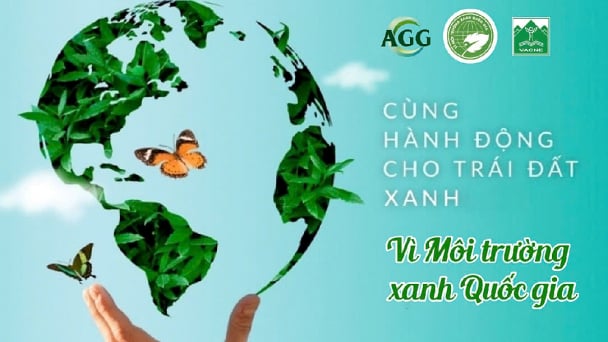
(VAN) The 'For a Green National Environment' programme aims to promote a green lifestyle, support businesses in implementing ESG practices, and turn Net Zero commitments into concrete actions.

(VAN) Cold-barn systems efficiently manage environmental and temperature conditions, which aids in the prevention of respiratory diseases in pigs and protects them from the vectors that transmit African swine fevers.

(VAN) To tackle challenges, the project 'Addressing key technical bottlenecks in the grouper supply chain in Vietnam' has been underway since 2024.

(VAN) The project 'Disease-Resilient and Sustainable Cassava Production Systems in the Mekong Region', funded by the Australian Center for International Agricultural Research (ACIAR), is being implemented from 2024 to 2028.